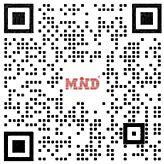With the substantial increase in the freight volume of the entire society, the sorting workload is getting heavier and heavier.
Therefore, more and more companies are introducing more advanced digital sorting methods.
In this process, the role of RFID technology is also growing.
There is a lot of work in warehousing and logistics scenarios. Normally, the sorting operation in the distribution center is a very
heavy and error-prone link. After the introduction of RFID technology, a digital picking system can be built through the RFID
wireless transmission feature, and the sorting work can be completed quickly and accurately through the interactive
guidance of the information flow.
At present, there are two main ways to realize digital sorting through RFID: DPS
(Removable Electronic Tag Picking System) and DAS (Seed Electronic Tag Sorting System).
The biggest difference is that they use RFID tags to mark different objects.
DPS is to install an RFID tag for each kind of goods on all shelves in the picking operation area,
and connect with other equipment of the system to form a network. The control computer can issue
shipping instructions and light up the RFID tags on the shelves according to the location of the goods
and the order list data. The operator can complete the “piece” or “box” in a timely, accurate and easy way
according to the quantity displayed by the RFID tag Unit`s product picking operations.
Because DPS reasonably arranges the walking route of the pickers during the design, it reduces the unnecessary
walking of the operator. The DPS system also realizes real-time on-site monitoring with a computer, and has various
functions such as emergency order processing and out-of-stock notification.
DAS is a system that uses RFID tags to realize seeding sorting out of the warehouse. The storage location in DAS represents
each customer (each store, production line, etc.), and each storage location is equipped with RFID tags. The operator first
enters the information of the goods to be sorted into the system by scanning the bar code.
The RFID tag where the customer’s sorting location is located will light up and beep, and at the same time it will display
the quantity of the sorted goods required at that location. Pickers can perform quick sorting operations based on this information.
Because the DAS system is controlled based on the identification numbers of commodities and parts, the barcode on each commodity
is the basic condition for supporting the DAS system. Of course, if there is no barcode, it can also be solved by manual input.
Post time: Jun-30-2021





